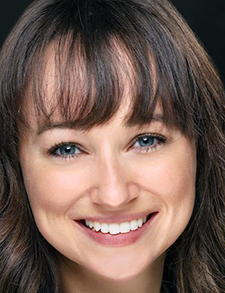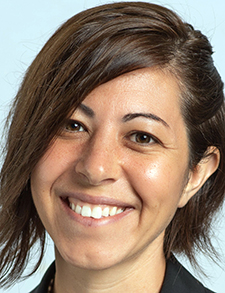Dr. Holmes presented the 2022 American Academy of Pediatrics Clinical Practice Guideline for Management of Hyperbilirubinemia in the Newborn Infant 35 or More Weeks of Gestation. A large, diverse committee developed the guideline over eight years. Dr. Holmes emphasized that the guideline is only intended for U.S. hospital systems. The purpose is to prevent chronic bilirubin encephalopathy (CBE). CBE manifests as choreoathetosis, hearing loss, and only a mild IQ effect, and occurs at an average bilirubin of 40 mg/dL.
Dr. Homes first talked through key action statements for prevention. She highlighted that identifying infants with hemolysis is critical. We should screen for maternal antibodies and obtain a Direct Antibody Test on the infant if the maternal blood type is unknown or AB+. We should screen for Glucose-6-Phosphate Dehydrogenase (G6PD) deficiency in atypical cases. More research targeted toward identifying babies with G6PD deficiency is needed. Finally, identifying suboptimal intake hyperbilirubinemia (a new name for breastfeeding jaundice) and intervening early with supplementation and breastfeeding support is essential.
Dr. Holmes then reviewed key action statements in the assessment. Evidence supports obtaining a bilirubin level in all infants within 24-48 hours of birth, prior to discharge. She outlined the use of transcutaneous versus serum bilirubin and discussed that rapid rates of rise could suggest hemolysis. She also reviewed changes to the neurotoxicity risk factors outlined in the guideline. Additionally, she reminded us to check total and direct bilirubin and look for cholestasis in infants 2-4 weeks old.
Next, Dr. Holmes discussed updates in treatment. It is exciting that the new nomograms are “safely higher” and more user-friendly. They are separated by gestational age and risk factors and based on a more diverse population than prior nomograms. Several online calculators now reflect this change. Additionally, clear guidance is provided for discontinuation of phototherapy, discharge, and follow-up care; use risk-of-rebound to determine the timing of follow-up and do not automatically check “rebound” bilirubin before discharging after phototherapy. Finally, there is a new pathway outlining the escalation of care when the exchange transfusion threshold is approached.
Dr. Holmes concluded by discussing the importance of limiting or eliminating sub-threshold phototherapy (treating hyperbilirubinemia with phototherapy when total serum bilirubin is under the threshold according to the nomogram). Phototherapy is not benign; risks may include disrupting mother-infant bonding and breastfeeding as well as increasing health care utilization post-discharge due to the medicalization of well infants.
Key Takeaways
- Be on the lookout for hemolysis! Screen for maternal antibodies and other hemolysis risks. Consider G6PD in severe or atypical cases.
- Identify suboptimal intake jaundice (new name for breastfeeding jaundice) and intervene early with supplementation as needed and breastfeeding support.
- The new nomograms for treating hyperbilirubinemia are “safely higher,” and we should work towards eliminating sub-threshold phototherapy.
- There is a new, clear pathway for escalation of care when approaching the exchange transfusion threshold.
- The guideline provides clear guidance on discharge and follow-up.

Dr. Ehrle

Dr. Hadley
Dr. Ehrle is a second-year pediatrics resident at Corewell Health/Helen DeVos Children’s Hospital in Grand Rapids, Mich. Dr. Hadley is a med-peds hospitalist and chief of pediatric hospital medicine at Corewell Health/Helen DeVos Children’s Hospital in Grand Rapids, Mich., and an assistant professor of internal medicine and pediatrics at Michigan State University College of Human Medicine.